TOOL TIME
Once in a while you may purchase some hamburgers, go home and then realize you forgot the pack of hamburger buns. It can be much the same when your customer starts the season with a flat of impatiens and returns home, realizing they don’t have anything but their hands to plant with.
At times, you may have thought: Everyone has tools, everyone knows how to use them, so why should time be spent on merchandising these items? Therefore, they are often overlooked and placed in the back of the store near the clearance merchandise. It is important to keep in mind what product placement can do for sales.
People need gardening tools to successfully garden. Although they are not the most expensive item, hand tools can easily add up to a profitable sum if displayed in the most visually enhanced environment. Tools are an easy means of promoting the marketing technique of impulse buying. Encourage customers to explore your tool selection, ask them if they need help or suggestions in choosing a specific tool, share your knowledge even if it is right before you grab their cash and the last item that goes into the bag.
Most companies specializing in tool manufacturing are more than willing to provide sessions on their products to help you better sell merchandise. That product knowledge is important; it not only provides you with the right information on the basics of tool functions but also strategies and suggestions on how to place the product in your store to gain the most profit.
Make tools just as appreciated by the customer as the Snickers bar they see when they stand in line at the grocery store. You will unconsciously captivate them the way the Snickers does by strategically placing it where the customer will be waiting to check out, as opposed to the candy aisle where most will purposely pass. Use the “last chance” buy, the “I might as well get it now, I’ll need it later” mentality. It is your job to close the deal on what the customer is already debating. The key is to place products where they can easily be seen, thus making it easier to sell and harder to forget.
Color. Bosmere, Inc. has recently added color to the attributes of its hand tools and has brought much attention to its product. “The brightly colored handles stand out,” said Sue Rykens, vice president of marketing, Bosmere. “The colors stand out in the store, and the colors stand out in the garden, making it harder to lose them.”
Bosmere has made the change, realizing that color is bold; it is different from all the rest. Bosmere’s collection includes yellow, green, blue, purple and red: a color for just about everyone. Color attracts customers; it gets attention when it is immersed into the pale beige wood and dark green that sometimes overrun the garden center.
Tom Eckert, vice president of marketing, Emsco Group, understands the overwhelming feeling customers sometimes experience. “The selection is so large the customer is faced with 45 choices and doesn’t know which one to choose, so they buy the brand name, which has nothing to do with quality.”
Combo packs. Emsco, along with other companies, offers tools to its buyers in combo packs. Eckert said that based on the retailer’s customers, Emsco tries to provide a POP approach that can be a stand-alone in an area. Each retailer is different and has the ability to place the display where they choose, but Eckert said the POP should be positioned where the buyer would consider the space to be “prominent real estate.”
Display and packaging. Rykens said that before selling the multi-colored tools, Bosmere didn’t have as much success with the uni-color red handled tools that were displayed in boxes. “We have been selling multi-colored tools individually displayed in ceramic pots at the check-out counters, and sales show that we have had great success with this,” Rykens said. Rykens also said that this success is greater than the sales of the uni-color boxed tools.
Bringing tools to the front of the store and closer to the checkout counter reminds customers of the new trowel they need or hand dibble they want to replace. Smith & Hawken has a display that gives customers a selection of tools but also the information. Doug Lauer, general manager, trade and wholesale, Smith & Hawken, said rather than placing their tools on a shelf with other brand tools, Smith & Hawken provides a display that also tells the Smith & Hawken story. “When a customer is interested in one of our products they can look at the display and see the entire collection and the accessories that go with it,” Lauer said. This is the display where customers can get the tools they need, and they will also see the gloves, hat and pants they can wear while using the tools. Every item has a hang tag that speaks to the features and benefits of the product.
Alan Randall, manager of operations at Barnel USA, said that Barnel uses the complementary products idea and multiple uses for items. Using a bucket at the check-out counter not only displays the bucket but also serves another purpose by containing small hand tools, utilizing counter space in the most aesthetically pleasing way.
Your display does not have to be large in scale. The point is to make the effort to position tools as a priority when it comes to product placement; whether it is large, like Smith & Hawken’s, or small, as Emsco’s 24 x 24 x 30-inch display. These displays are not only for convenience and placement but they provide another selling point. Alan Randall, Barnel USA, said, “We use the strategy of complementary products, which sell one another.” Using this idea, your display is now a two for one; one display, two impulses.




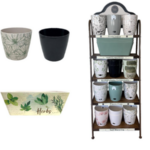

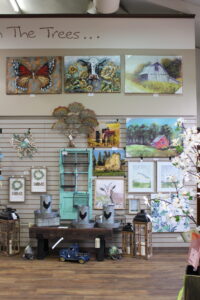
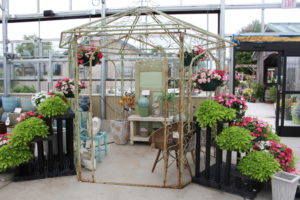
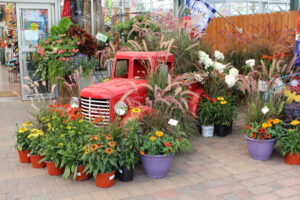

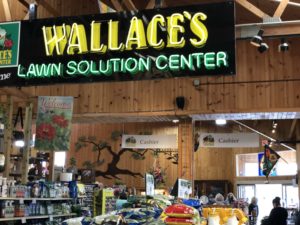
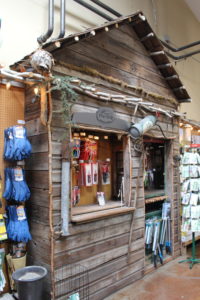



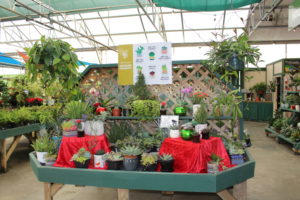
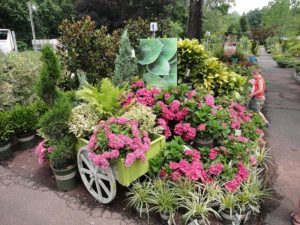
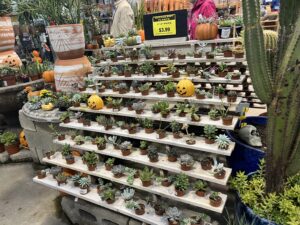
 Videos
Videos





